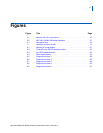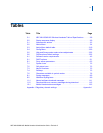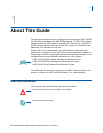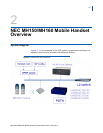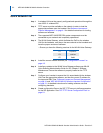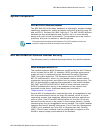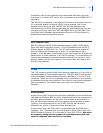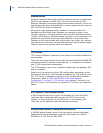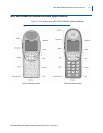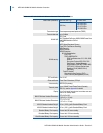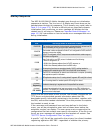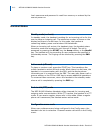
NEC MH150/MH160 Mobile Handset Overview 2-3
NEC MH150/MH160 Mobile Handset Administration Guide - Revision 2
System Components
NEC MH150/160 Wireless Handset
The NEC MH150/160 Wireless Handset is a lightweight, durable handset
specifically designed for mobile workplace use within a facility using SIP
and an 802.11 wireless LAN (802.11a/b/g/n). The NEC MH160 Wireless
Handset has the same features and function, but in a more durable
design with push-to-talk functionality. The handsets are to be used on-
premises; they are not cellular or satellite phones.
The latest handset and Handset Administration Tool (HAT) software versions are
required to support the features described in this document.
NEC MH150/MH160 Wireless Handset Security
The following security methods are supported by the mobile handsets.
WPA2-Enterprise with 802.1X
The handset supports WPA2-Enterprise, as defined by the Wi-Fi Alliance,
which is based on the 802.11i standard. WPA2 provides government-
grade security by implementing the Advanced Encryption Standard
(AES) encryption algorithm. The Enterprise version of WPA2 uses
802.1X authentication, which is a port-based network access control
mechanism using dynamic encryption keys to protect data privacy. Two
802.1X authentication methods are supported on the mobile handset,
EAP-FAST and PEAPv0/MSCHAPv2. Both of these methods require a
RADIUS authentication server to be available on the network and
accessible to the phone. Additional details are provided in
“Requirements” on page 4-1.
Normal 802.1X authentication requires t
he client to renegotiate its key
with the authentication server on every AP handoff, which is a time-
consuming process that negatively affects time-sensitive applications
such as voice. Fast AP handoff methods allow for the part of the key
derived from the server to be cached in the wireless network, thereby
shortening the time to renegotiate a secure handoff. The mobile handset
supports two fast AP handoff techniques, Cisco Client Key Management
(CCKM) (only available on Cisco APs) or Opportunistic Key Caching
(OKC). One of these methods must be configured for support on the
WLAN to ensure proper performance of the handset.
NOTE



